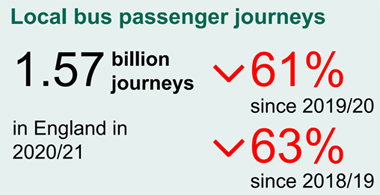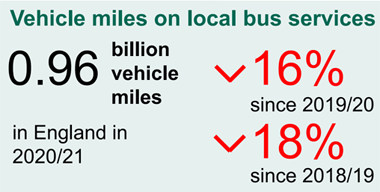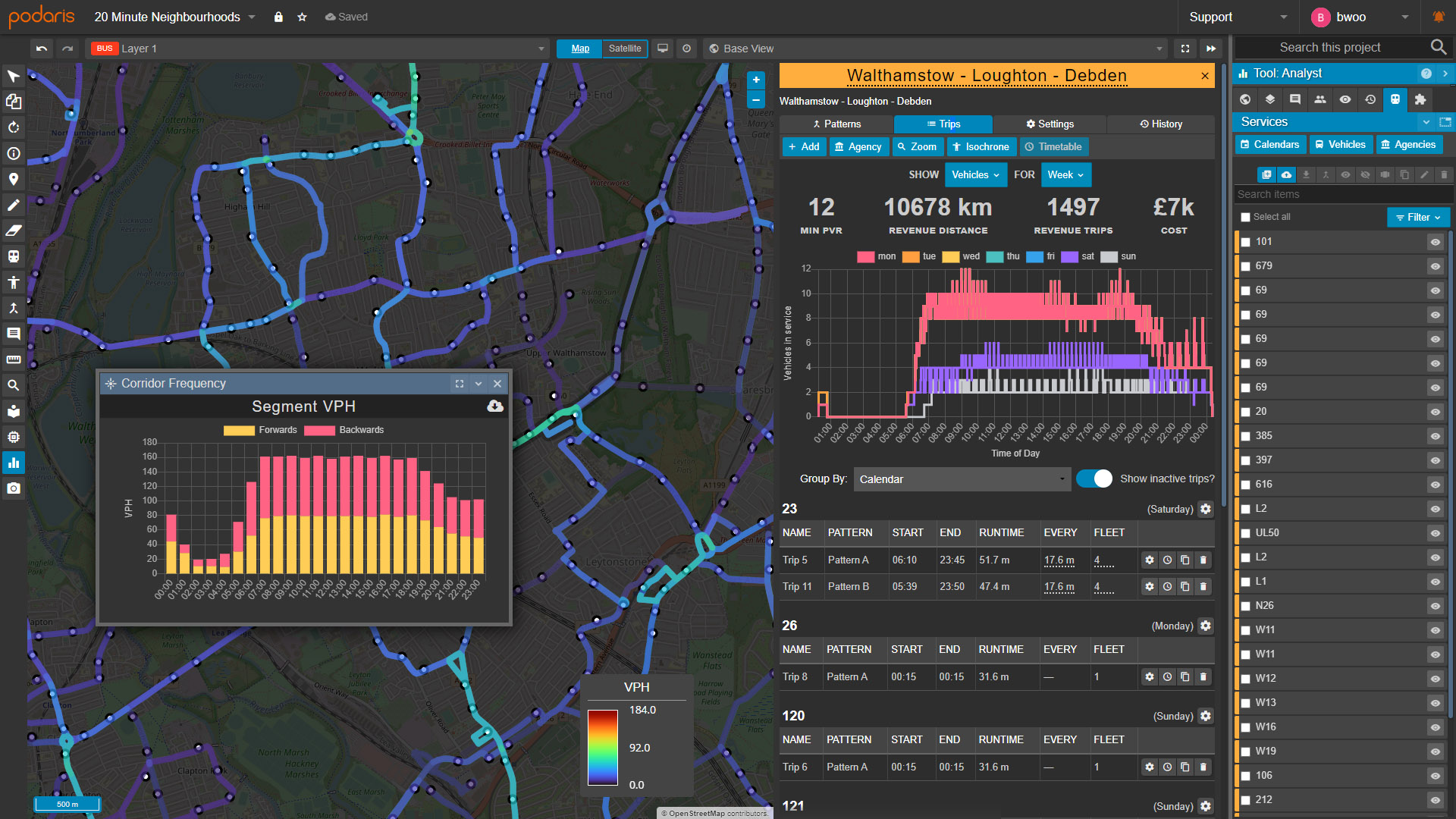From the 4th of October, all pandemic-related revenue funding in England will cease. How Local Transport Authorities and operators plan to avoid what the Department of Transport (DfT) describe as a potential ‘cliff-edge’ at that time will be detailed in network reviews to be submitted this summer. In this post, we take a look at sustainability and the future of bus travel in post-pandemic England.
The effects of the pandemic on local bus passenger journeys in England, as detailed in the DfT's November ‘21 ‘Annual bus statistics’ release, make for stark, if unsurprising reading. According to its annual survey of bus operators, in the year ending March 2021, such journeys had plummeted by 61% from the previous year.


While less severely impacted, bus mileage also decreased during the same period, by 16%, a figure that would undoubtedly have been considerably higher but for the mitigating effect of the COVID-19 bus service support grant (CBSSG). This grant, capped at £166.8m, was designed to maintain the running of services that would otherwise have operated at a loss or could not operate at all.
Towards sustainability
As a successor to the Bus Service Support Grant, the Bus Recovery Grant, and most recently the Bus Recovery Grant Extension, have continued to offer support as the pandemic continues its slow decline. This extension, effective from April 6th, represents the final tranche of recovery funding for buses, and is conditional on operators having produced so-called ‘Bus Network Reviews’ (BNRs) in collaboration with Local Transport Authorities (LTAs).
These reviews, to be produced by each LTA with the involvement of all associated operators, are to provide a strategy for sustainability and the maximisation of patronage. Sustainability here is defined as stable and resilient networks (comprising both bus and light rail) that are no longer reliant on COVID-related supporting funding.
With a significant time imperative attached to their completion (July 1st), many LTAs and operators are now looking for ways to rapidly fulfil the requirements of Bus Network Reviews, which include but are not limited to:
- Providing patronage and fare revenue projections for local public transport networks
- Facilitating the open sharing of data between LTAs and operators at a route level
- Consideration of how modal shift to public transport can be encouraged and farebox, concessionary patronage and other revenue can grow.
Ultimately, this should inform a shared set of data-driven assumptions between LTAs and operators of how patronage is expected to recover over the next 6-12 months, what risks there are to patronage return and service levels, and how those risks may be mitigated.
Evolving tools for rapid planning and analysis
During the pandemic, Podaris has significantly evolved its tools for route level analysis conducted in a fraction of the time taken by more traditional means, and has empowered interdisciplinary teams to share data, generate cost estimates, understand the impacts of service alterations and compare and contrast transport scenarios, all from a shared, online platform.

Among the keys considerations for LTAs, operators and consultancies looking to rapidly understand and analyse their existing transport data are that their chosen tools:
- Support a wide variety of data types (transit feeds, passenger data, etc…)
- That this data can be imported and analysed with minimal complexity and set up time
- That it can be worked with intuitively to assist in the development of multiple scenarios
- That proposals can be developed collaboratively, with no bottlenecks in the consultation/engagement processes
Data is at the heart of BNRs, and the ability to identify routes as either viable, marginal or non-commercial (scrutinising individual routes in detail, if necessary), is imperative to producing reliable reviews. With Podaris, planners are able to generate outputs relating to peak vehicle requirements, operating costs, accessibility and catchment across entire multimodal networks and measure the impacts of comparative fare strategies.
And while the generation of high-quality, reliable outputs is critical to producing evidence-based BNRs, the ability to present data visually is equally important in helping LTAs and operators ‘agree a common understanding and shared set of assumptions’ (DfT BNR guidance). With Podaris, planners can bring all stakeholders together on shared, interactive maps that showcase route statistics and allow multiple scenarios to be presented within a single project.
As this final phase of funding signifies an opportunity to drive patronage and encourage modal shift to buses and light rail, Podaris is helping operators and authorities to better understand and optimise their networks and promote a healthy future for public transport in England, and beyond.
To see Podaris in action, get in touch to schedule a demo and find out how its collaborative planning capabilities can accelerate your transport projects.